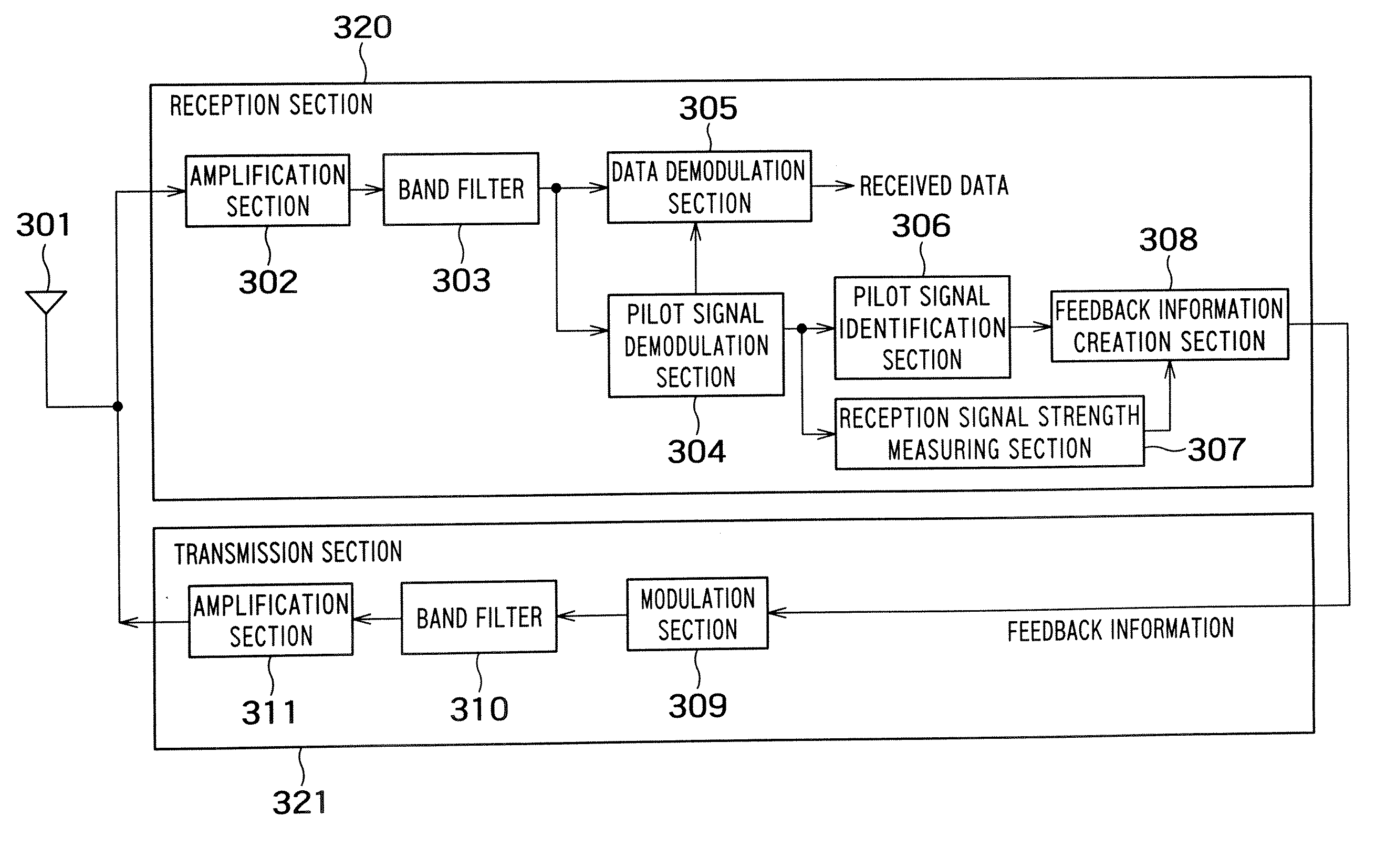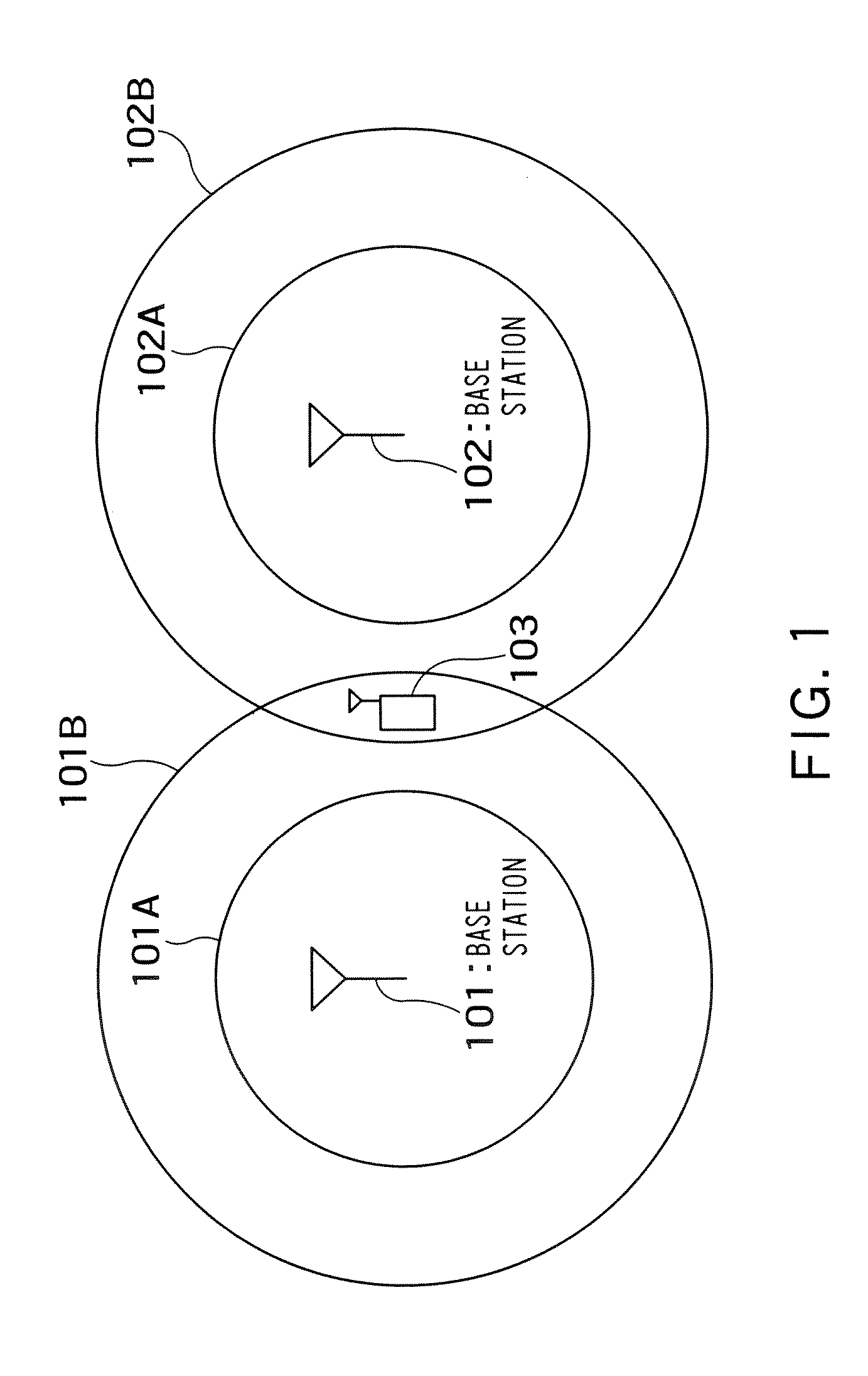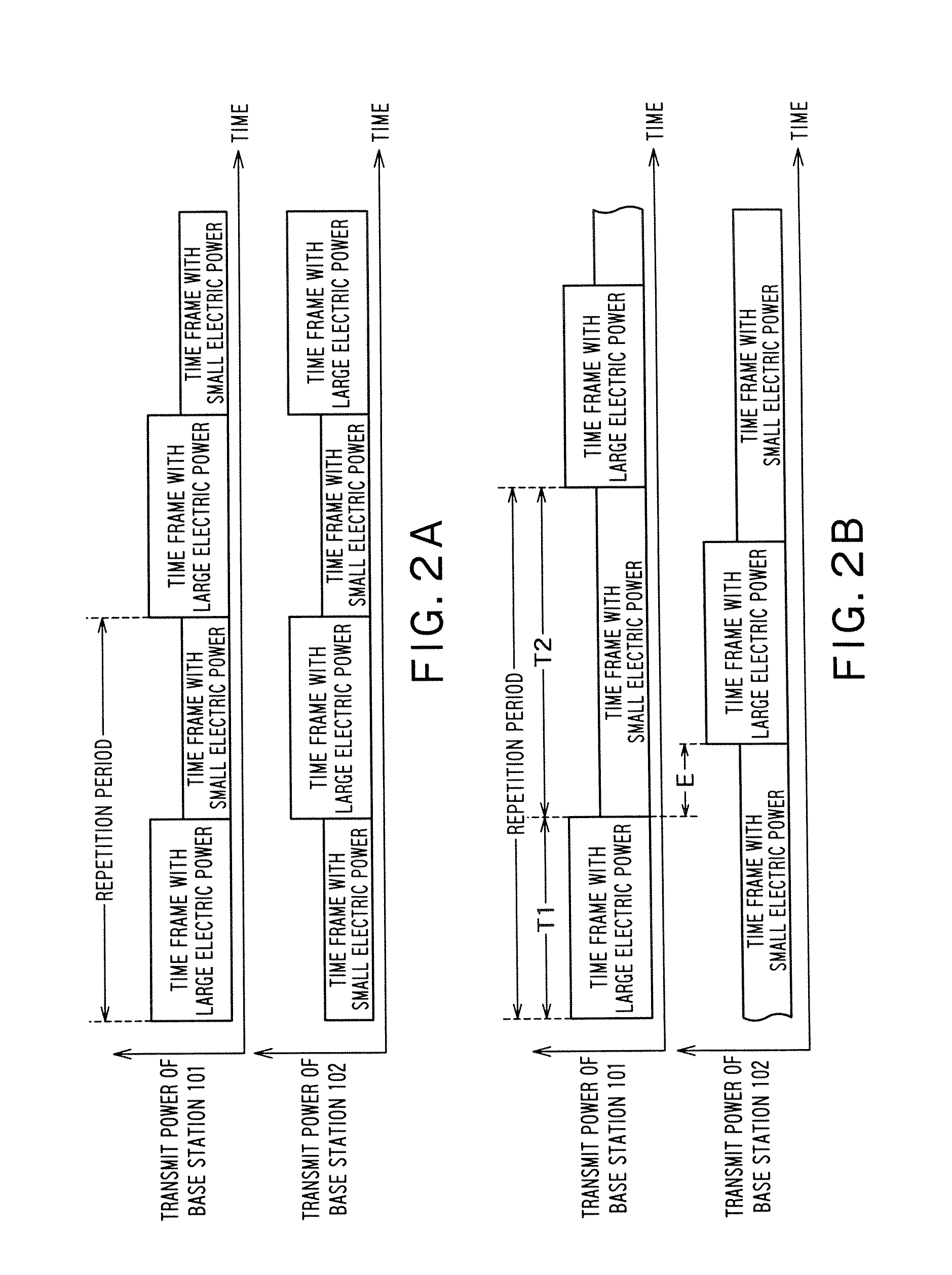Base station and radio communication method
a radio communication and base station technology, applied in radio transmission, power management, electrical equipment, etc., can solve the problems of reducing utilization efficiency and increasing interference from neighboring base stations
- Summary
- Abstract
- Description
- Claims
- Application Information
AI Technical Summary
Benefits of technology
Problems solved by technology
Method used
Image
Examples
Embodiment Construction
[0039] Hereinafter, this embodiment will be explained in detail with reference to the attached drawings.
[0040]FIG. 1 shows an embodiment of a cellular communication system according to the present invention. FIG. 2A and FIG. 2B illustrate time frame transmit power control carried out by the base stations in FIG. 1.
[0041] In FIG. 1, a base station 101 and a base station 102 have the function of transmitting time frames with large electric power which covers a whole cell and time frames with small electric power which covers only the neighborhood of the base stations.
[0042] Reference numeral 101A denotes a cover range (communication area) when the base station 101 transmits time frames with small electric power and 101B denotes a cover range when the base station 101 transmits time frames with large electric power. In the same way, reference numeral 102A denotes a cover range when the base station 102 transmits time frames with small electric power and 102B denotes a cover range wh...
PUM
 Login to View More
Login to View More Abstract
Description
Claims
Application Information
 Login to View More
Login to View More - R&D
- Intellectual Property
- Life Sciences
- Materials
- Tech Scout
- Unparalleled Data Quality
- Higher Quality Content
- 60% Fewer Hallucinations
Browse by: Latest US Patents, China's latest patents, Technical Efficacy Thesaurus, Application Domain, Technology Topic, Popular Technical Reports.
© 2025 PatSnap. All rights reserved.Legal|Privacy policy|Modern Slavery Act Transparency Statement|Sitemap|About US| Contact US: help@patsnap.com



